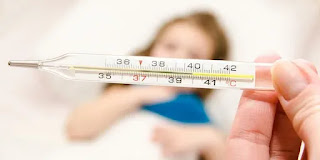Influenza, more commonly known as the flu, predominantly affects children, especially during the winter season. The transmission of this illness happens regularly within communal environments such as schools and kindergartens. Common points of contact like hands, noses, and mouths act as transmission hubs for the virus.
Young children, in particular, are more susceptible to the flu due to their frequent exchange of items such as toys and pacifiers, making it challenging to enforce hygienic precautions. Ensuring adults follow basic hygiene practices such as frequent hand washing is already a daunting task; it's even more so for children.
This scenario makes children the perfect conduit for flu transmission, which takes place via saliva droplets, thus emphasizing the importance of close contact control. Community environments are a haven for such viruses.
Vaccination stands out as the most effective prevention measure for children, despite its effectiveness not being absolute. Prioritizing vaccinations for children with chronic illnesses or those who are frail is paramount. However, extending this preventive measure to healthy children is a decision left to the parents.
When children fall ill due to seasonal viruses, what's the best course of action? The FreeAstroScience team provides a comprehensive guide. The starting point is to disregard unfounded fears, myths, and bad advice.
Sick children need a balanced diet. Avoid prolonged fasting as fever accelerates metabolism, requiring more food intake. Offer them their favorite foods, like potatoes fried in olive oil or pie, as they are easily digestible. Do note that due to sickness or a possible sore throat, children may experience a decrease in appetite.
Hydration is another crucial aspect. Encourage children to drink as much as possible, especially if their fever exceeds 38 degrees Celsius. Sugary drinks are acceptable in moderation as they ensure hydration, thereby preventing potential damage to the kidneys and other systems.
When it comes to clothing, it's advisable to dress children in lighter clothes when they have a fever, allowing them to sweat freely to disperse heat. This practice necessitates even more hydration
Medications like paracetamol can be used to alleviate flu symptoms, joint pain, or headaches. It's important to note that antibiotics should not be administered for flu, as it's a viral infection. Misuse of antibiotics can lead to bacterial resistance.
Maintain a child-friendly home environment with a temperature no higher than 19 degrees Celsius. Anything above 20 degrees could be problematic for young children.
To prevent excessive screen time due to prolonged home stays, it's essential to limit the use of devices like TVs, smartphones, and tablets to a maximum of 2 hours per day. Encourage board games and interactive play with adults, primarily parents, to keep children engaged.


Post a Comment